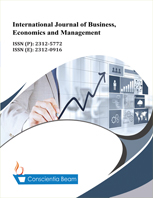Does Capital Structure Affect the Profitability of Listed Family and Non-Family Firms? Evidence from Bangladesh
DOI:
https://doi.org/10.18488/journal.62.2020.73.131.145Abstract
The aim of this study is to examine the impact of capital structure on firm performance. The proxy variables of capital structure are short-term debt ratio, long-term debt ratio and total debt ratio where firm performance is measured by return on assets (ROA) of Dhaka Stock Exchange (DSE) listed 39 family firms and 39 non-family firms. Based on a paired match sample selection procedure, 390 firm-years covering the period of 2013 to 2017 are used as the final sample of this study. By extrapolating from the Pooled Ordinary Least Square (OLS) regressions results, it is found that leverage ratios are significantly and negatively associated with the firm’s profitability. It is also found that family firms are highly influenced by debt financing than non-family firms. Finally, this study disagrees with the trade-off theory but agrees with the pecking order theory that profitable firms depend more on equity than debt as their key financing option in Bangladesh.

